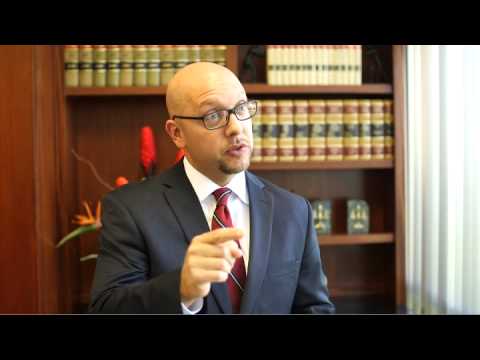Hazardous Products
Hazardous Product Attorney Expertise …
Product liability deals with cases involving defective or unsafe products.
Manufacturers, wholesalers, and retailers of products can be held liable for damages arising from the use of defective products. Products covered by this area of law include food, drugs, and real estate, as well as virtually all consumer products.
A person who is injured and seeks damages does not need to be the original purchaser of the product. Nor does a person seeking damages have to prove negligence in many cases. Product liability frequently is a question of strict liability: that is, if the product is defective and that defect caused injury, the injured user may sue for damages as long as the product was used as it was meant to be used and not substantially changed from its original condition.
If the injured user was using the product in a manner not intended by the manufacturer or retailer, or had altered the product so that safety features were disabled, it may not be possible to prove that injuries were caused by defects in the product. The defendant may be able to successfully claim that the injuries were caused by the acts of the plaintiff.
Helping Central Texas Consumers Obtain Compensation For Consumer Product Injuries
Questions of negligence and breach of warranty are also grounds for a claim for damages under product liability. In the case of negligence, if it can be shown that a company was negligent in testing its product adequately or in supplying directions for its use, the injured party probably has grounds for filing suit. Similarly, a manufacturer implies a warranty for fitness of use and freedom from defect when an item is sold. If the item proves to be defective, or is unfit for the purpose intended, an injured user can retain a product liability lawyer to file a case. In a case of negligence, it is important that the plaintiff be able to show that the product was defective when it left the control of the party he is suing. It is not possible to hold someone liable for a defect that occurred after that party had control over the product.
In product liability, there are various areas of defects that can occur. If a claim of strict liability is to be pursued, the injured party will need to show that the product was unreasonably dangerous for its intended use, due to a defect. There are generally three areas in which a product can be unreasonably dangerous:
#1 The manufacturer or seller can fail to warn about dangers associated with the products use. Manufacturers and sellers are expected to give adequate warnings about possible dangers, and to provide clear and adequate instructions of use. Failure to do so can cause a useful product to become deadly. For instance, coolants used in automobiles are extremely toxic – failure to print warnings of this toxicity on the product labels could lead to an accidental poisoning and thus to a suit for damages.
#2 The product may have a design defect. This means that the product is manufactured with a defect, even if it is assembled perfectly. An example would be a car gasoline tank that is designed with weak walls such that an impact can rupture the tank and cause the car to catch on fire, even when the tank is correctly assembled and installed.
#3 A manufacturing defect exists when an otherwise safe product is rendered dangerous because it is assembled improperly. A car whose wheel is installed with missing or cross-threaded bolts may lose a wheel at high speed, injuring or killing the driver and passengers. If it is proved that the car was manufactured with that defect, the manufacturer will be liable.
In all cases of product liability, it is essential to the success of the case that the product be preserved and that all paperwork showing the origin of the product be made available. Receipts showing purchase, any repair records, etc., can be vital to building a successful case.
Trust Funk: Austin’s Best Hazardous Products Attorney
If you feel concerned about the side effects that occurred after a potentially harmful prescription drug or defective product, schedule a consultation today to talk with the attorneys at Funk and Associates. We will discuss your circumstances and see how we might be able to assist you.
Since 2001, we have handled cases involving:
- Automobiles and component parts
- Motorcycles and component parts
- Braking systems
- Lithium-ion batteries and battery packs
- Vaping gear
- Hover boards
- Electric skateboards
- Industrial machinery and equipment such as saws, mills, lathes, drills, grinders, and presses
- Drugs including both prescription and over-the-counter medications
- Medical devices such as prosthetic devices, pacemakers, artificial joints, and breast implants
- Hazardous materials including toxic chemicals, pesticides, and asbestos products
- Motor vehicle parts involving defective automotive components of SUVs, trucks, cars, and motorcycles
- Household appliances including ovens, grills, refrigerators, ranges, dishwashers, washers and dryers
- Consumer goods such as toys, shoes, and clothing
More Information
Asbestos
Personal Injury Damages
Types of Damages
Types of Compensatory Damages
Amount of Damages
Factors Affecting Amount of Damages Awarded
Negligence Overview
Do I have a case?
Personal Injury Claim Evaluation
Please enter all required information to complete your personal injury claim evaluation. If your information is received before 3:00 p.m. CST, an attorney will call you back on the same day!
The submission of information to Funk & Associates (“The Firm”) or one of its attorneys does not create an attorney-client relationship, and the receipt of said information does not constitute an attorney-client relationship. This website presents general information which is not intended to be legal advice, nor should you consider it as such. Contacting Funk & Associates does not, and should not, prohibit you in any way from seeking legal advice regarding this or any other matter. This Firm makes no representations, material or implied, of any statute of limitations which may or may not exist.

